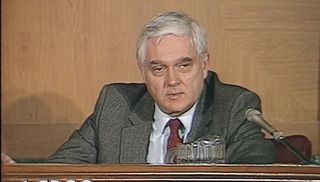
OTD in 1975, the Stanley R. Mickelsen Safeguard Complex at Nekoma, North Dakota, became fully operational, defending Minuteman ICBMs at Minot AFB with 30 Spartan (armed with 5-Mt W71 warheads) and 70 Sprint (armed with 1-kt W66 enhanced radiation warheads) antiballistic missiles. 

Less than two months later, word leaked that the Army planned to deactivate Safeguard, days after Congress had voted to immediately shut it down, citing its growing ineffectiveness against Soviet MIRVs. By January 1976, only the site’s phased-array radar remained operational. 





Republican Mark Andrews—North Dakota's lone representative—bravely voted for the shutdown: “Because this ABM site does not have defense capability in today’s technology, it does not make much sense for me to…argue for [it] just because the expenditure happens to be in my State.” 

John Macfarlane, the 29-year-old mayor of Landgon—home to many of the site's ~1,500 workers and whose economy had come to depend on it—said the decision shattered his trust in the federal government. “There ain't nothin' gonna happen that'll straighten that out. That's gone.” 

Safeguard ultimately cost about $33 billion (in today’s dollars), not including the unknown but considerable research, development. testing, and production costs for the 115 nuclear warheads manufactured by the Atomic Energy Commission for the Spartan and Sprint missiles. 



• • •
Missing some Tweet in this thread? You can try to
force a refresh


























